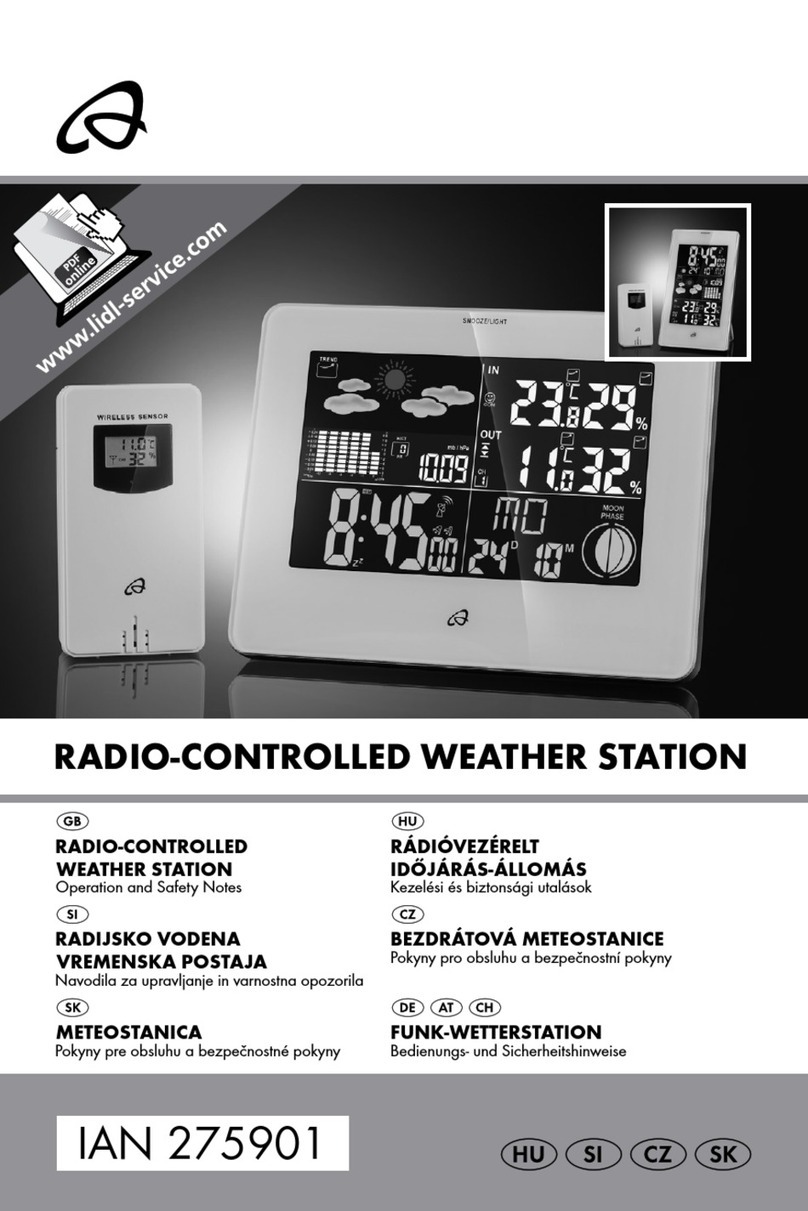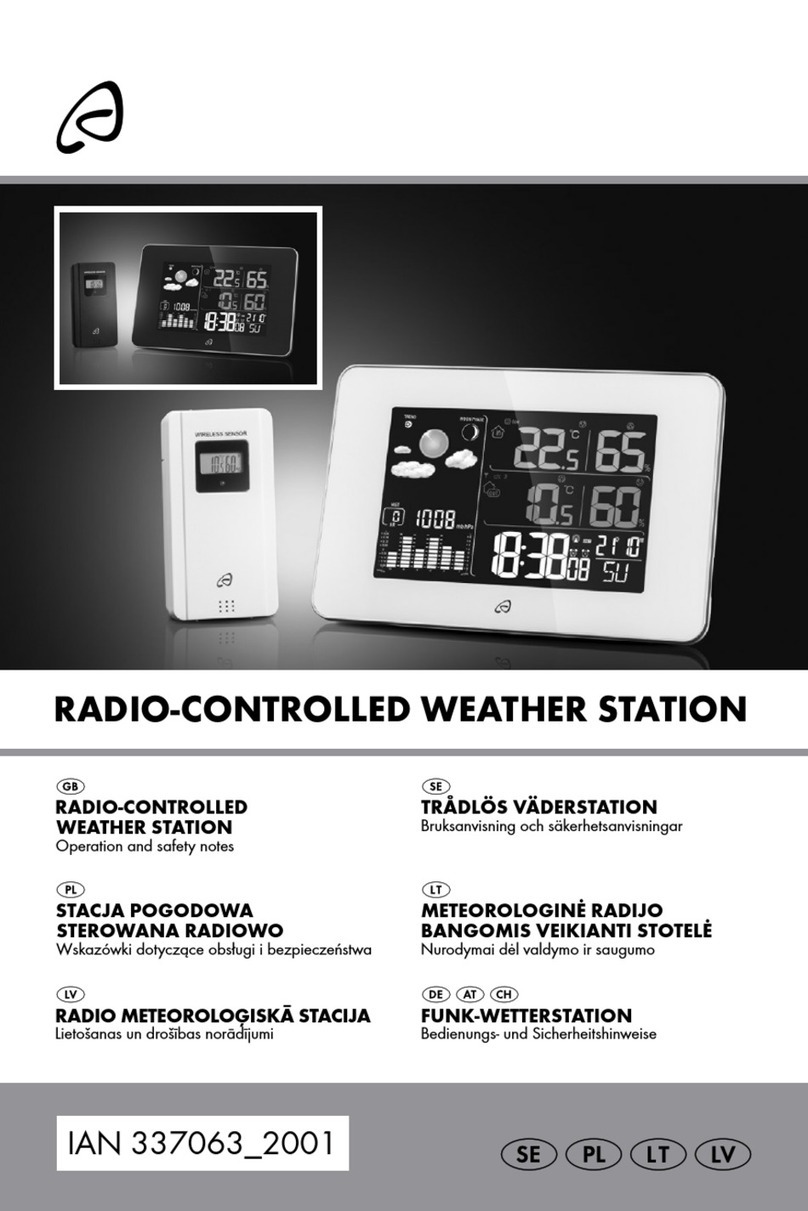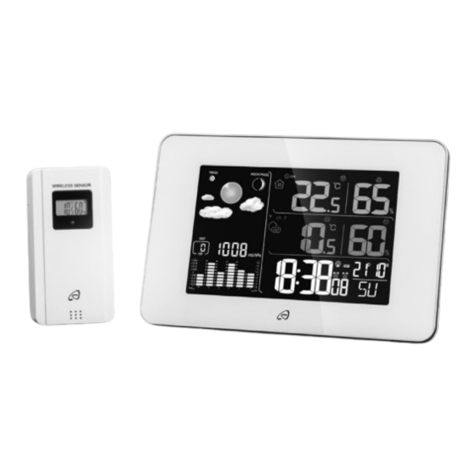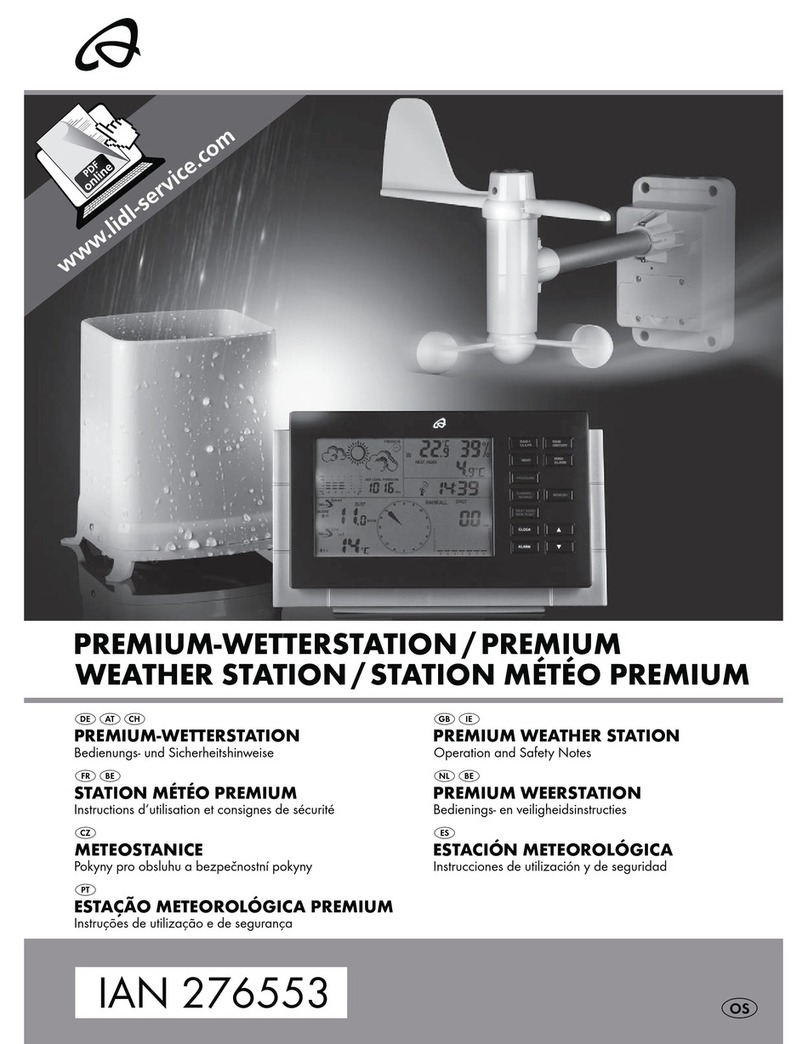
5GB/IE
Introduction......................................... Page 6
Proper use............................................. Page 6
Description of parts and features ........ Page 6
Technical data ...................................... Page 8
Safety ..................................................... Page 9
General safety information .................. Page 9
Safety instructions for batteries............ Page 10
Before initial use............................... Page 11
General information............................. Page 11
Preparing to use the outdoor sensor ... Page 12
Preparing the temperature station
for use.................................................... Page 12
Temperature station.............................. Page 15
External sensor...................................... Page 15
Setting the language/time zone /
time/date manually............................. Page 15
Displaying summer time ....................... Page 17
Calling up the time zone...................... Page 17
Setting the alarm time........................... Page 18
Calling up the alarm times................... Page 18
Switching the alarm on/off................. Page 18
Using the snooze button ...................... Page 19
Displaying temperature........................ Page 20
Calling up the minimum/maximum
values .................................................... Page 20
Displaying temperature trends............. Page 21
Battery state display............................. Page 21
Replacing the batteries......................... Page 21
Troubleshooting................................ Page 21
Cleaning and maintenance......... Page 23
Disposal................................................. Page 23
Declaration of conformity ........... Page 24
Warranty.............................................. Page 25































